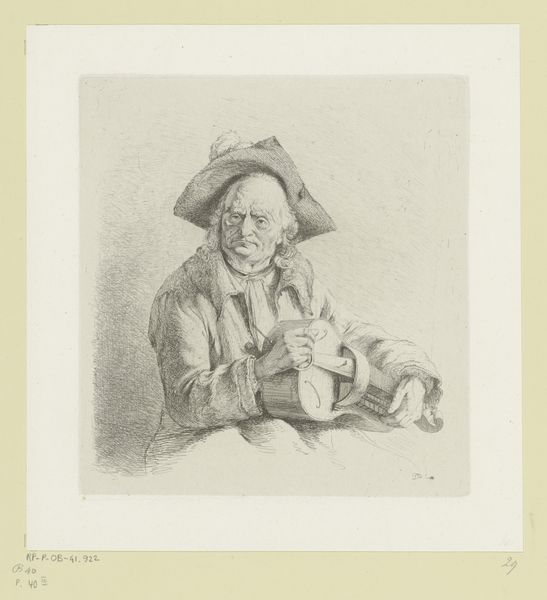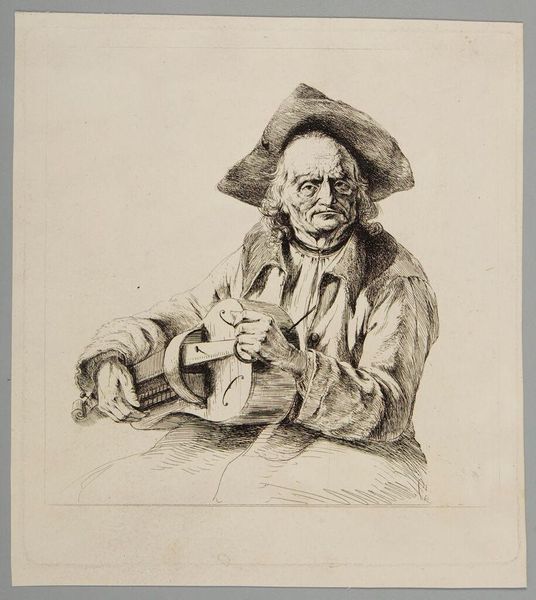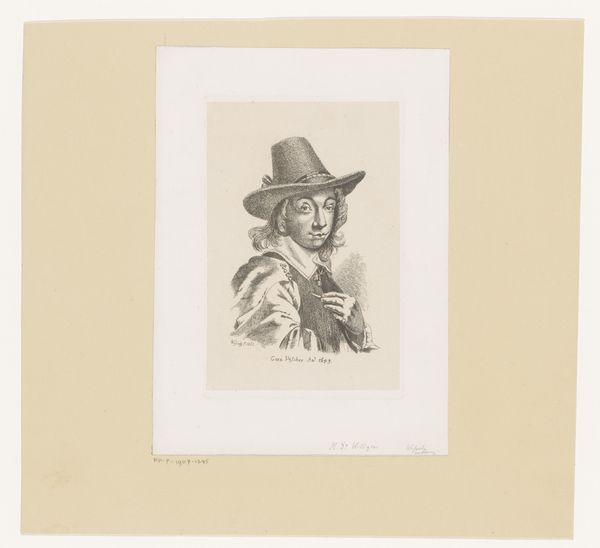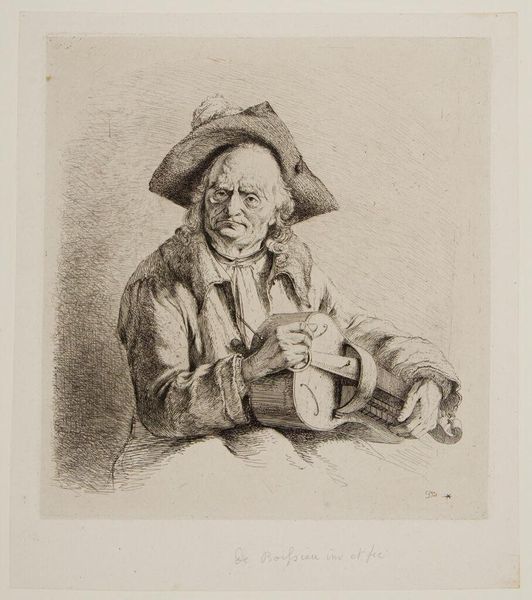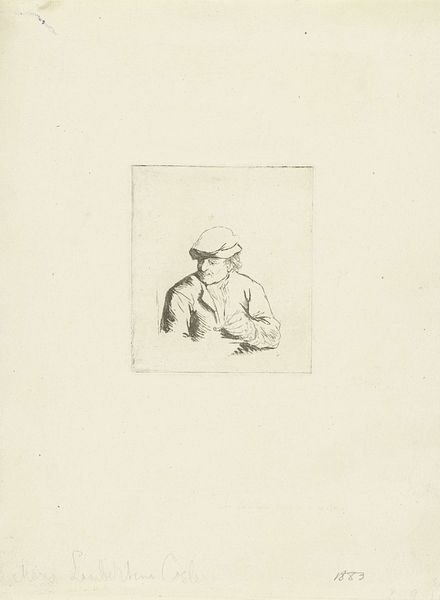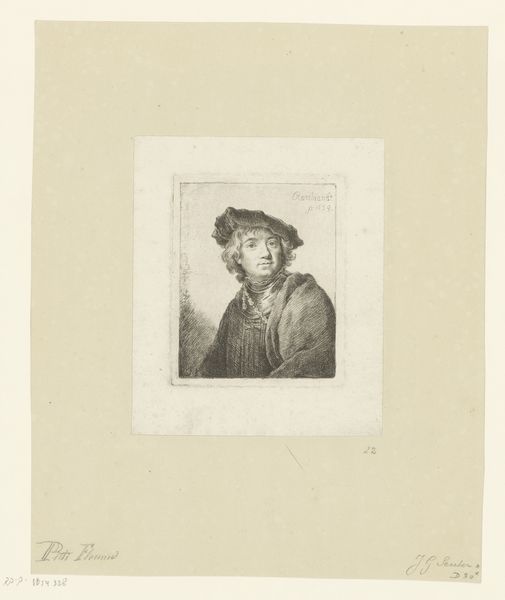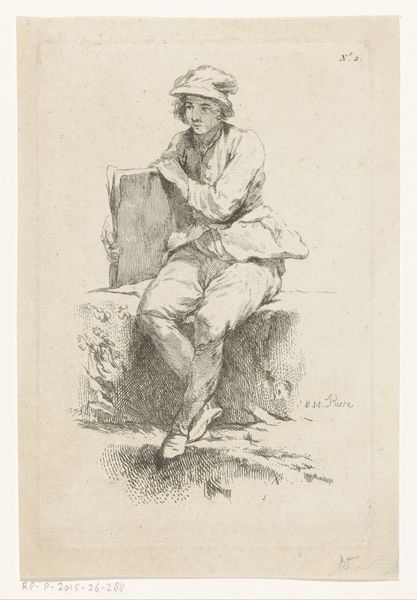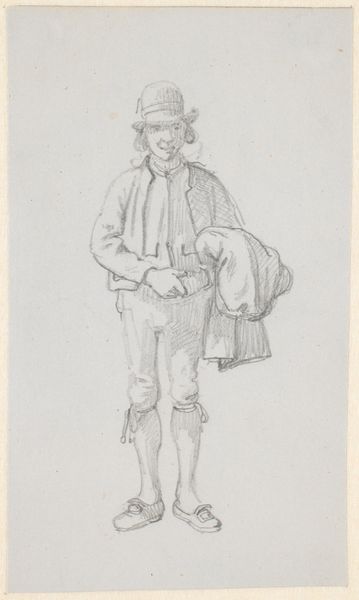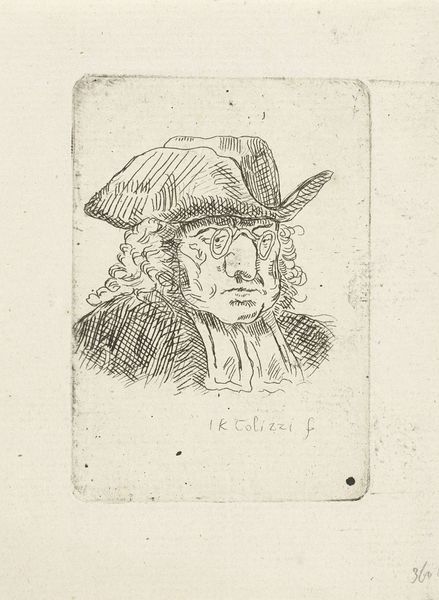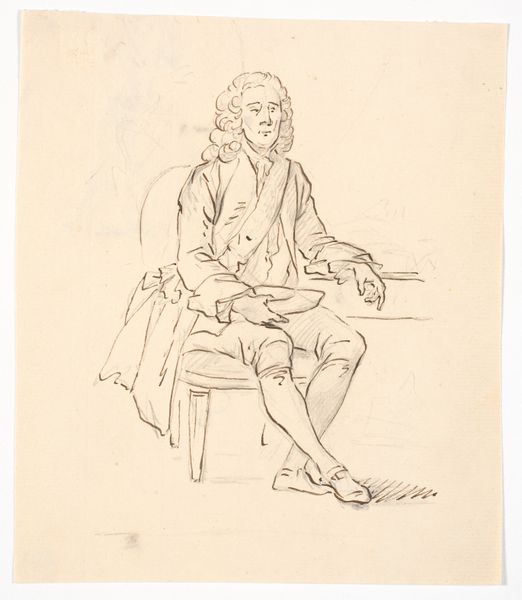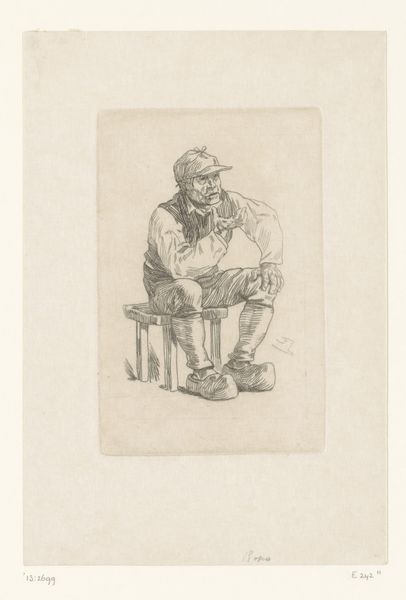
Dimensions: height 215 mm, width 195 mm
Copyright: Rijks Museum: Open Domain
Jean Jacques de Boissieu created this etching, titled ‘Lierspelende man’ which translates as ‘man playing the hurdy-gurdy’, in 18th century France, when the instrument was going out of fashion. The image presents us with a figure who appears to be a vagrant musician. The hurdy-gurdy, once popular among the aristocracy, became associated with street performers and the lower classes by this time. Boissieu’s choice to depict such a figure reflects a broader interest in the lives of ordinary people that emerged during the Enlightenment. We can interpret the image as a commentary on social change, depicting a moment in which cultural practices shift between different social classes. The image seems to be self-consciously progressive by seeking to elevate a common man to the status of art. To understand the full significance of ‘Lierspelende man,’ we might research the history of musical instruments in France and social attitudes towards the poor in the 18th century. This kind of background allows us to better understand the changing place of art in society.
Comments
No comments
Be the first to comment and join the conversation on the ultimate creative platform.
